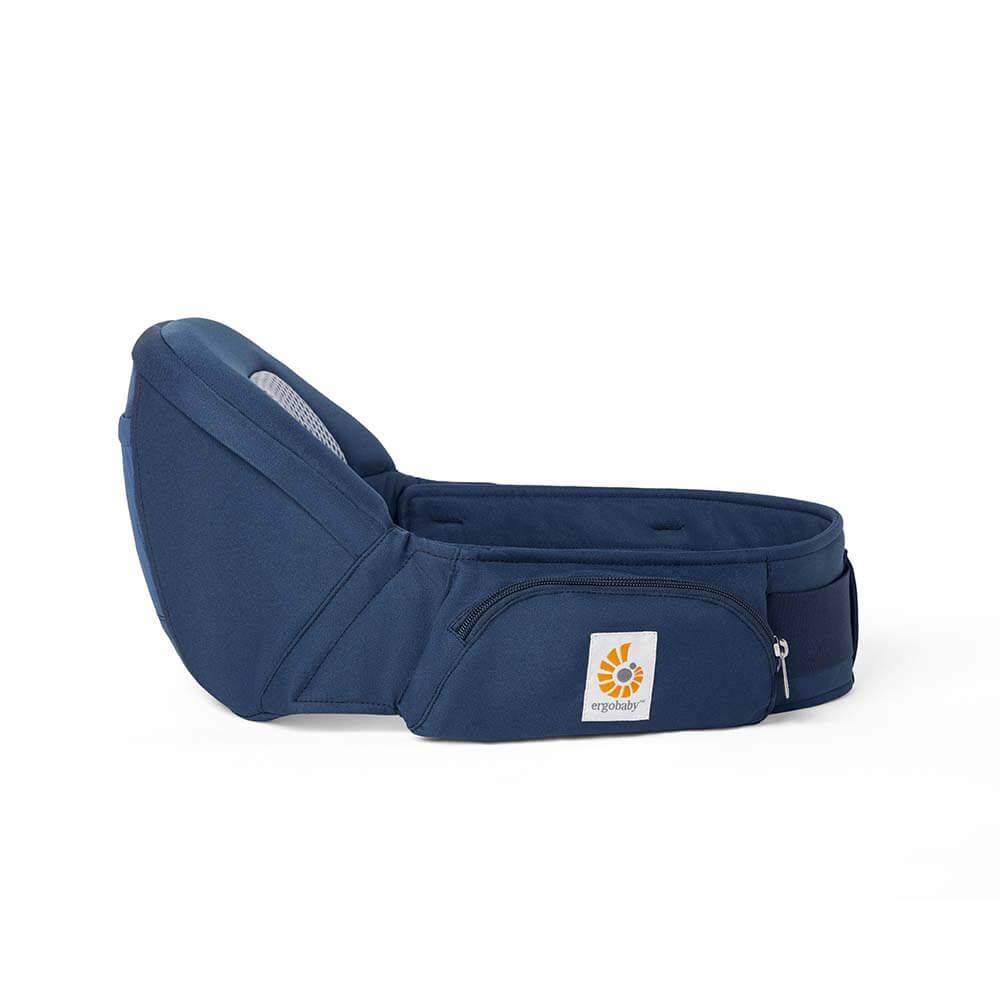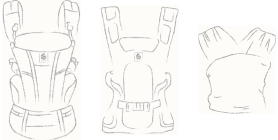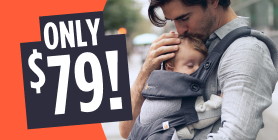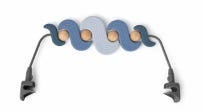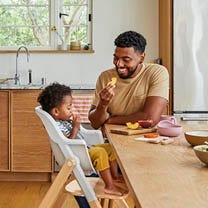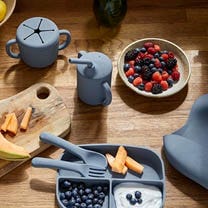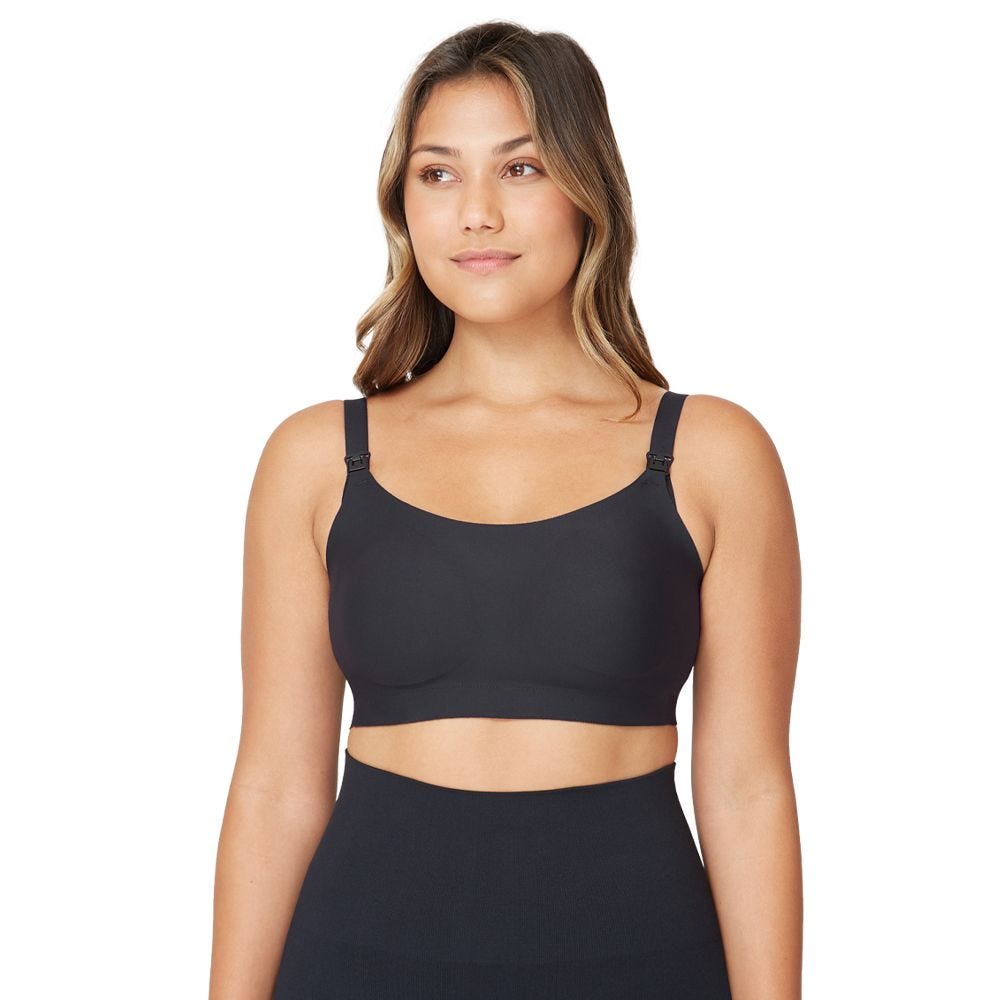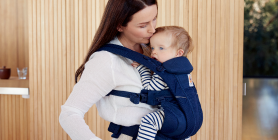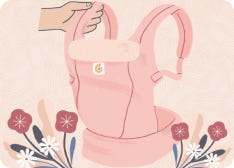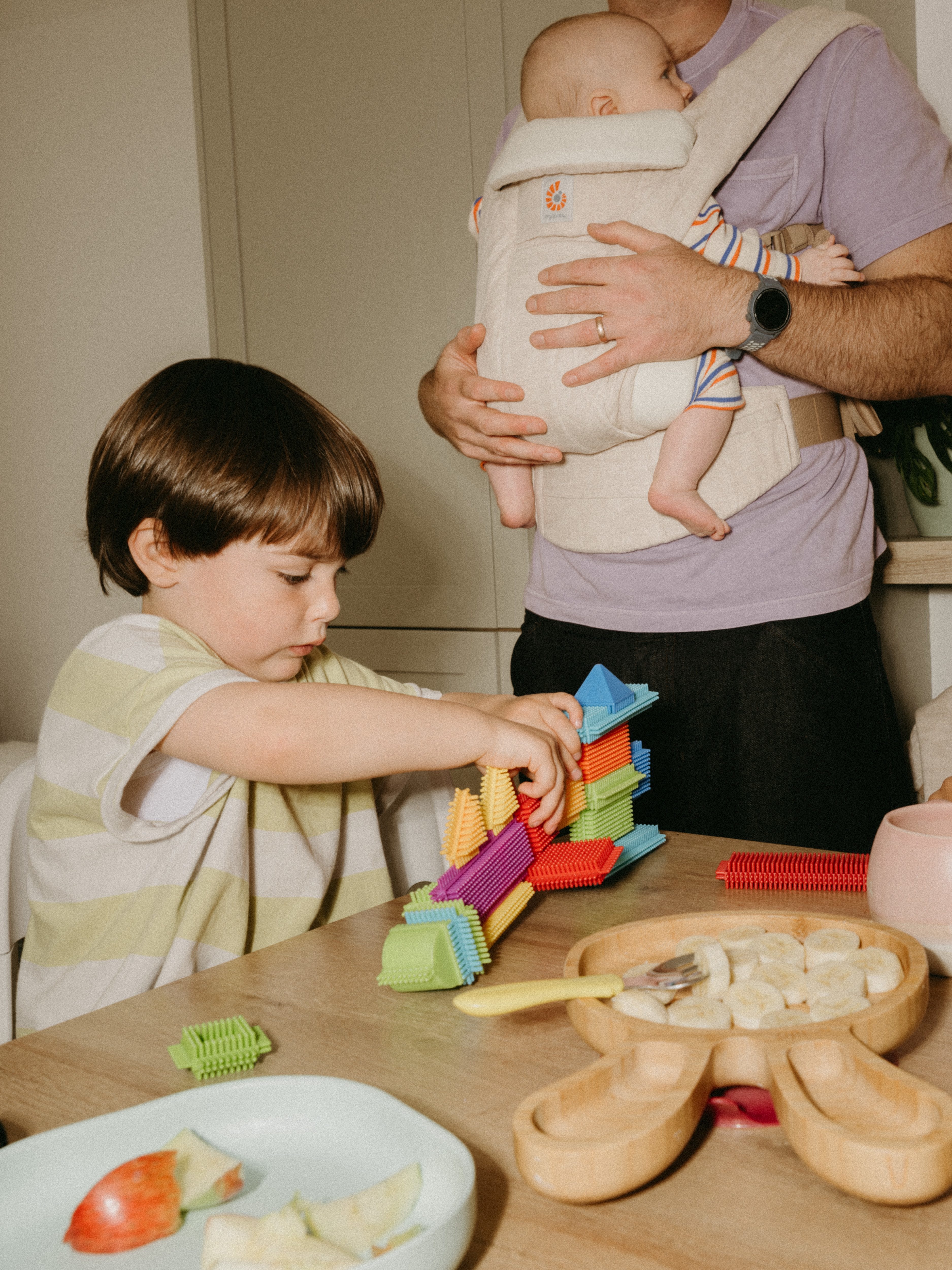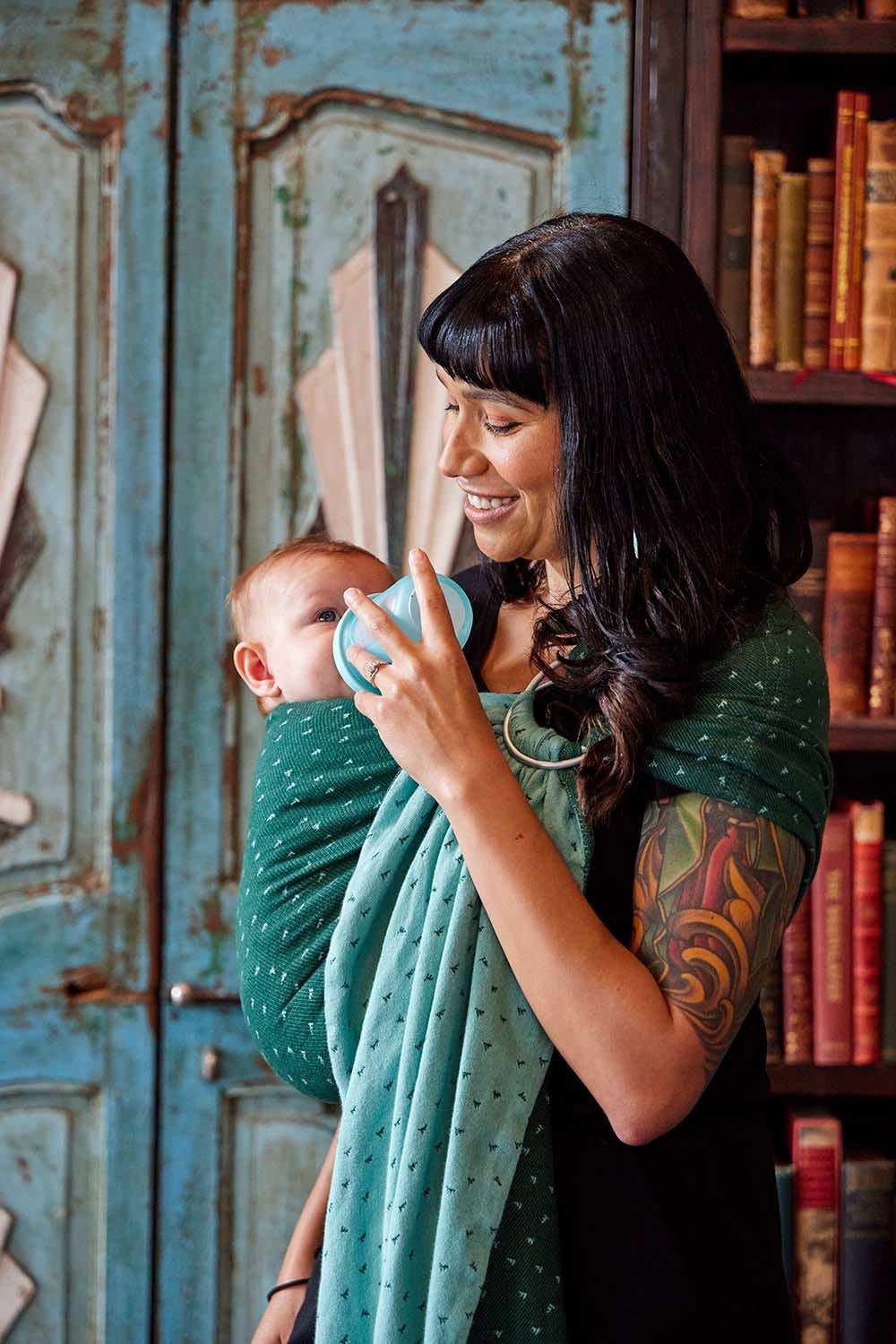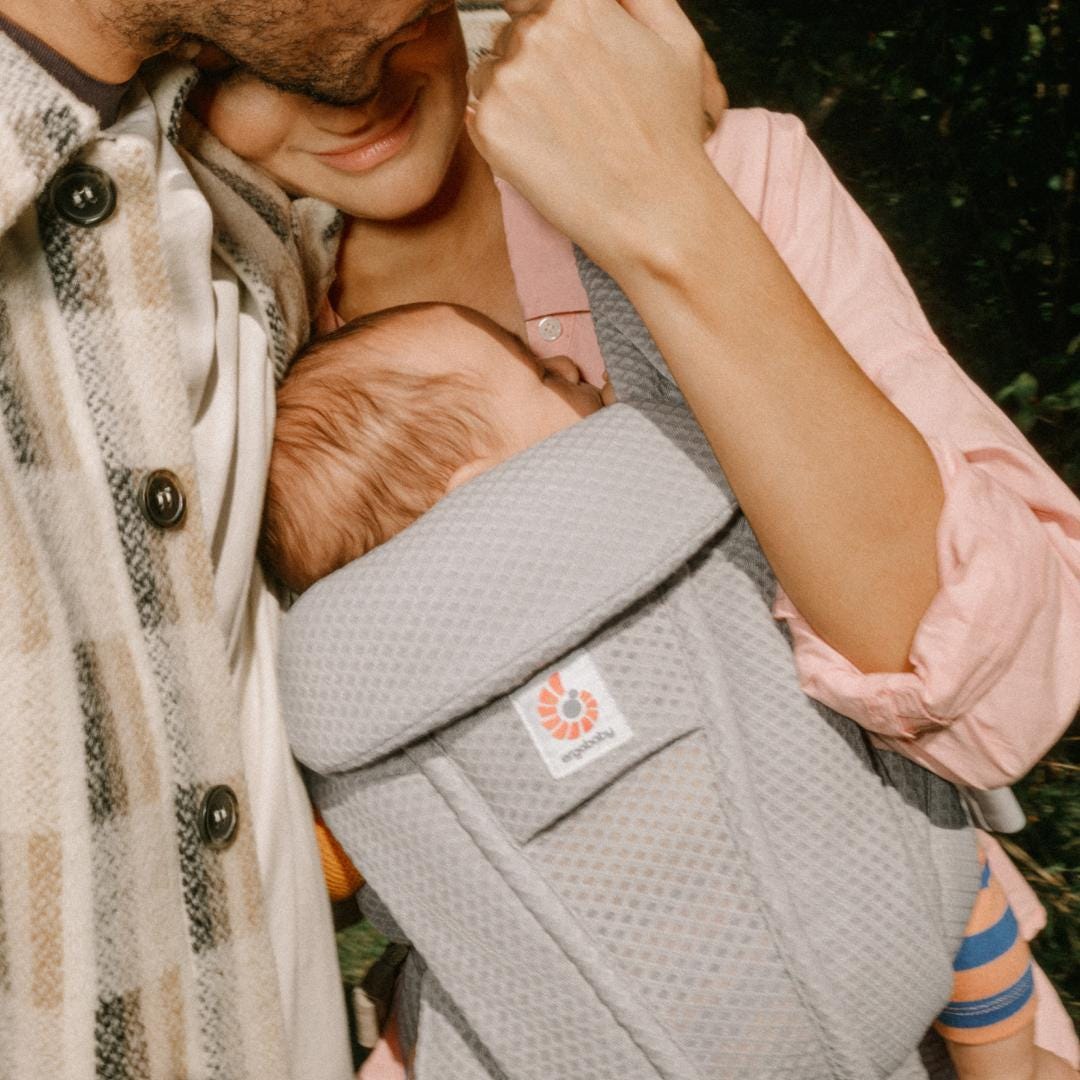
Baby Wrap vs Carrier: Find the Right Babywearing Option for You
Choosing between a baby wrap vs carrier can be a big decision for parents who want to keep their little one close while staying hands-free. There are so many reasons to wear your baby, but choosing the right carrier can be overwhelming. Each option offers unique benefits, and the right choice depends on your lifestyle, baby's age, and personal comfort preferences.
In this guide, we'll compare baby wraps vs carriers, explore their pros and cons, and help you decide which one (or both) best suits your needs.
What are the different types of baby carriers?
Baby carriers come in different styles, each designed to offer a secure and comfortable way to carry your baby. While baby wraps fall into their own category, structured baby carriers are more versatile and user-friendly.
Here are the main types of baby carriers:
1. Soft-Structured Carriers (SSCs)
These are the most popular and ergonomic carriers, featuring padded shoulder straps and a structured waistband for better weight distribution. They provide excellent support for both the parent and baby.
Example: Ergobaby Omni Deluxe – Offers multiple carrying positions, from newborn to toddler, with lumbar support and cushioned straps.
2. Meh Dai (formerly known as Mei Tai)
A hybrid between wraps and structured carriers, these carriers feature a fabric panel with long ties that allow for adjustable support.
All About Baby Carriers for Nature Adventures
3. Ring Slings
Made from a single piece of fabric that loops through two rings, these are great for quick ups and downs, especially for newborns.
4. Baby Wraps
These are long pieces of fabric that you wrap around your body and tie securely. They provide a snug, womb-like environment for your baby.
Example: Ergobaby Aura Baby Wrap – Lightweight and breathable, making it an excellent newborn carrier wrap.
What to Consider When Choosing a Baby Wrap vs Carrier
When deciding between a baby carrier vs wrap, consider the following factors:
1. Baby’s Age & Weight
- Newborns (0-3 months) – A soft, babywearing wrap is ideal, as it provides a snug, womb-like environment.
- 3 months and up – A structured carrier offers more support and weight distribution.
- Toddler stage – Structured carriers are preferred for carrying heavier babies comfortably.
2. Ease of Use
- Baby wraps require practice to tie correctly but provide a custom fit.
- Carriers are quicker to put on and take off, with adjustable straps.
3. Comfort for Parents
- Wraps distribute weight evenly but can be warm.
- Structured carriers provide lumbar support, reducing back strain.
4. Portability
- Wraps are lightweight and easy to pack.
- Carriers have more padding and structure but are bulkier.
5. Longevity
- Wraps are mainly suited for newborns and younger babies.
- Structured carriers grow with your baby, from infancy to toddlerhood.
Many caregivers start with a wrap and transition to a carrier as their baby grows. Others prefer using both interchangeably based on the activity or setting.
If you’re still unsure, find out which carrier is right for you with our quiz!
Pros and Cons of Using a Baby Carrier
Pros
✅ Easy to use – Quick to put on and adjust.
✅ Better weight distribution – Supports baby’s weight evenly, reducing strain on your back.
✅ Multiple carrying positions – Can be used in front, back, and hip carries.
Cons
❌ Less flexibility – Straps and buckles can be less adjustable than a wrap.
❌ More structured feel – Some parents prefer a softer, more fabric-based carrier.
❌ Bulkier than a wrap – Not as easy to fold and store.
Pros and Cons of Using a Baby Wrap
Pros
✅ Snug and cozy fit – Mimics the womb, making it perfect for babywearing newborn babies.
✅ Lightweight and compact – Easy to pack in a diaper bag.
✅ Affordable – Generally less expensive than structured carriers.
Cons
❌ Learning curve – Takes practice to tie correctly.
❌ Limited weight range – Less ideal as baby grows heavier.
❌ Can feel warm – The extra layers of fabric may be hot in summer months.
Choosing between a baby wrap vs sling? We’ve got some info.
Baby Wrap vs Carrier: Which is right for you?
|
Feature: Best for |
|
Ease of Use |
|
Support |
|
Weight Limit |
|
Carrying Positions |
|
Comfort |
|
Wrap Newborns, lightweight portability |
|
Requires practice |
|
Snug, soft |
|
Lower (best for under 20 lbs) |
|
Mainly front carry |
|
Soft & flexible |
|
Carrier Longer use, heavier babies |
|
Quick & easy |
|
Better back & hip support |
|
Higher (supports up to 45 lbs) |
|
Multiple (front, hip, back) |
|
More structured support |
While baby carriers are fantastic for mobility and closeness, depending on the adventure of choice you might want to be a stroller along too.
There are a LOT of baby stroller options on the market. So we understand how confusing it can be to choose the one that’s right for your family. Not only are there a variety of brands, but a variety of strollers that serve different purposes.
There are a few types of strollers on the market:
- Full-sized stroller: This is typically the stroller parents thing of buying for all its versatility.
- Lightweight or umbrella stroller:These compact strollers are perfect for on-the-go adventures.
- Jogging stroller: Designed for parents who want to combine fitness with outdoor adventures.
- Double stroller: Designed for parents with multiple kids, especially twins.
- Car seat carrier: These strollers connect to a specific car seat. We don't typically recommend these as they can be unsafe for baby and uncomfortable for parents who are pushing.
Learn more about the types of strollers and which one would be best for you.
Should you get both?
Many parents find that a wrap is perfect for the newborn stage, while a structured carrier becomes more practical as the baby grows. If you're an active parent, investing in both may give you the best of both worlds.
Ready to try baby wearing? Before starting to use a baby carrier, there are a few things you should know.
No matter which option you choose, babywearing helps create strong bonds and makes life easier for caregivers. Whether you opt for a baby wrap or carrier, the most important thing is finding what feels best for you and your baby.





